Weighted blankets are a high-ticket item, and that’s for good reason: they’re touted as somewhat of a miracle cure for problems like sleeplessness and anxiety, and you know that if you suffer from sleeplessness and/or anxiety, you’re willing to do a lot to find some relief!
Unfortunately, as pricey as weighted blankets are, they’re still not always made with great ingredients. Polyester fabrics and plastic pellets are crummy for the environment–seriously, we do not need more plastic (especially plastic pellets!) in our waste stream–and I’m not gonna blame you if you don’t feel like sleeping every night with that nonsense draped all over your skin, either.
Supplies & Tools
It takes some fiddly work and some sewing prowess, but it’s completely possible to DIY your own weighted blanket, and to do so using natural and/or sustainably-sourced materials. Here’s how:
- Instead of buying new fabric, upcycle flat sheets. For my weighted blanket, I’m using two cotton twin-sized flat sheets. Nope, they’re not even the same color, and I don’t care! If you care, you can buy organic cotton flat sheets or upcycle something cuter to DIY a duvet cover.
- Instead of buying plastic pellets, use glass pellets. They’re hypoallergenic and don’t contain anything harmful that can leach out over time, although I do recommend sewing yourself a duvet cover, as I would with any filled bedding to give yourself an extra layer in case of rips.
In addition, you’re going to need some good measuring tools and sewing tools. Spring for an excellent-quality universal sewing needle for this project, because it’s shocking the amount of straight-line sewing you’re going to be doing. I switched out needles midway through sewing the first series of channels for the filling and then spent longer than I care to admit trying to troubleshoot why the thread tension was suddenly shot before finally realizing that the problem was, of COURSE, the needle.
Fun fact: when in doubt, change the needle. It’s nearly always the problem.
So now that you have a brand-new, excellent-quality needle installed the correct way in your sewing machine, a couple of sheets, and several pounds of glass pellets, here’s how to turn all of that into a future of sound sleep!
Directions
1. Wash, Dry, And Iron Your Fabric
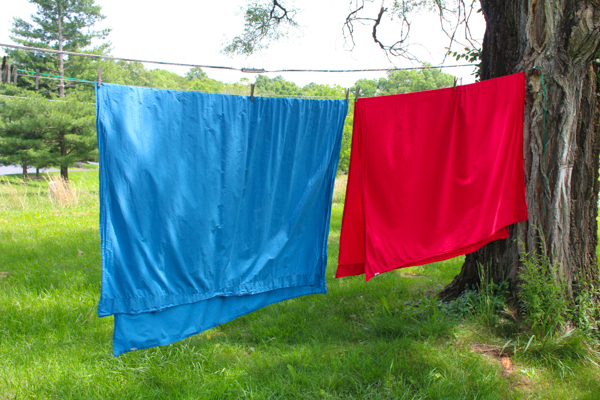
It’s crucial for both brand-new and upcycled fabrics alike! Pro tip: sheets can come out of the dryer ridiculously wrinkly, no matter how much care you take. Instead of tumble drying them, use a clothesline. Smooth them absolutely flat, pin them well, and when they’re dry you’ll have an easier time ironing out the remaining wrinkles!
2. Measure Out A Grid
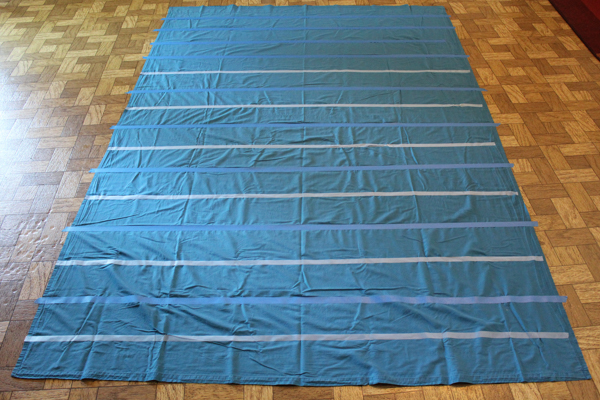
First, re-measure your flat sheets. Even though they’re supposed to be a standard size, I learned the hard way (via a bunch of unhappy comments!) that most/many/all flat sheets, perhaps particularly after washing and drying, do not match these measurements.
Divide each measurement into a reasonable number of divisions to make a grid. You’ll be sewing long columns of stitching parallel to the short sides of your blanket, filling a row with filling, then sewing parallels to the long sides of your blanket to close each row until your entire blanket is a grid with each module containing an equal amount of filling. It takes a little bit of math and a little bit of eyeballing to figure out what will be practical for your blanket.
My twin flat sheets measure approximately 66″ x 96″, so I decided on a grid of 16 columns by 8 rows, for 128 total modules.
Use a marking pen or masking tape to mark out the columns on one of the flat sheets. I like to do this even before I sew the two sheets together, although you can certainly complete the next step and then come back to this.
3. Sew The Flat Sheets Together

Pin the flat sheets right sides together, then hem together around three sides, leaving one long side open. You’ll be using this open side to fill the columns, and will close it in the last step.
If you preferred to sew the sheets together before measuring and marking the columns, then measure and mark them now.
4. Sew The Channels

Using a very short stitch length, stitch all of the column divisions, using your markings as the guide. You can stitch each of these twice if you want to make sure that the sewing line is very, very sturdy.
5. Measure And Mark The Row Guidelines
Lay your blanket flat again, and mark all the row gridlines the same way that you marked the column lines. Do this before you start to fill your blanket because you’ll be sewing each row gridline down after you fill the modules below it.
6. Calculate The Amount Of Filling For Each Module
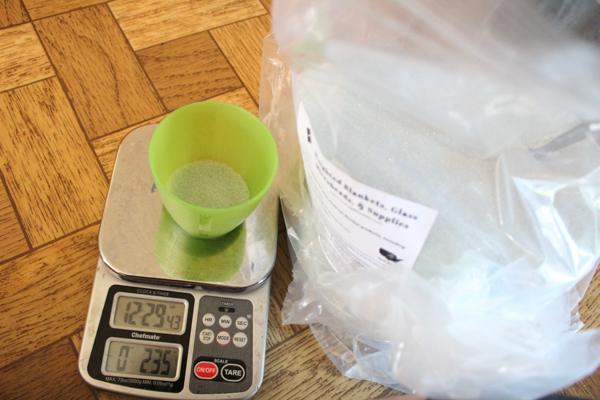
Remember that the total weight of your blanket should be about 10% of your body weight and that the total number of modules that you have to fill is represented by the number of columns multiplied by the number of rows.
For instance, I have a 16×8 grid making up my blanket, so I have 128 modules to fill. I’d like my blanket to weigh approximately 18 pounds, which is 288 ounces (fun fact: there are 16 ounces in a pound!). Dividing 288 by 128, I find that I should fill each module with 2.25 ounces of glass pellets.
That’s too fiddly for me, so I estimated and let myself fill each module with between 2 and 2.5 ounces of glass pellets. Feel free to fudge your own numbers a bit, too!
7. Fill The Blanket
Tare a kitchen scale to a small cup, and weigh out the appropriate amount of filling for one module. Pour that filling into the first channel, shake it down, then repeat until you’ve done all of the channels. Lift the blanket up by the open end, shake all the filling down again, and sew along the first row marker so that you lock the filling into the modules along the bottom row of the blanket.
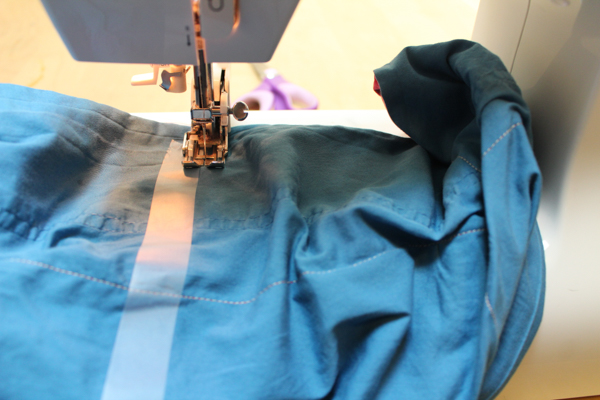
Repeat for each of the remaining rows. It helps to push your sewing machine back towards the middle of the table so that you’ve got room for the entire weighted blanket up there.
When you’ve reached the last row, you can double-fold and sew the blanket’s opening closed, sealing that row and hemming that edge.
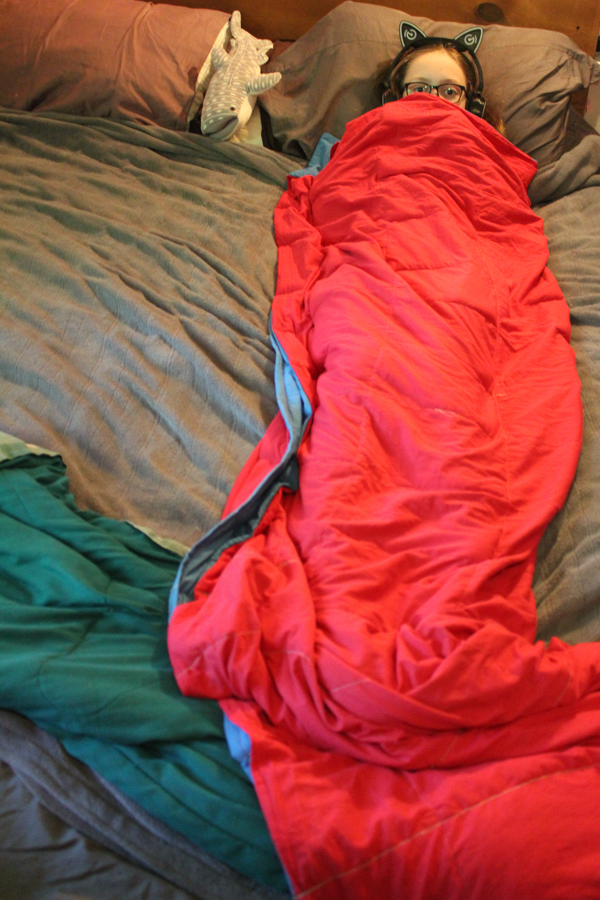
As you might be able to tell from the above image, my entire family loves my weighted blanket! On the day I completed it, in fact, I showed it off to my partner as soon as he came home from work, he lay down on the bed to test it out, and within a couple of minutes was sound asleep in his work clothes, out like a light for an unexpected 7pm nap. My teen likes to veg out under it while listening to music, and I really only get it back at night, where it’s added to my arsenal of anti-insomnia remedies.
Full disclosure: I don’t know if it’s super helped my insomnia, but I already suspected that I was a hard case, and it IS very, very, very comfy. Totally worth the time and effort!





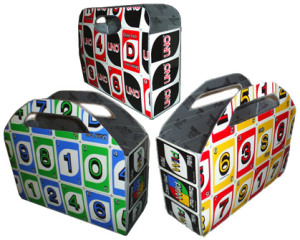
I’m intrigued by the concept of weighted blankets. In the Australian outback, (in earlier times) quilts called ‘waggas ‘ were made from Hessian bags sewn together and covered with cotton fabric. They were quite heavy and probably served the same purpose, as well as being cheap and durable. They could also be a ‘swag’ or bedroll. Thanks for this article.